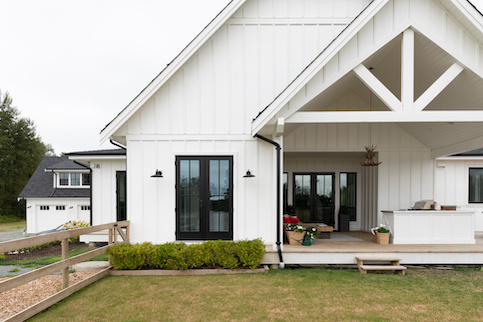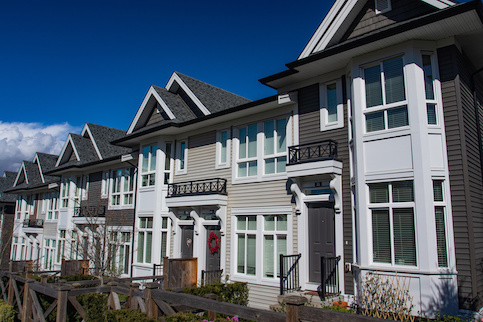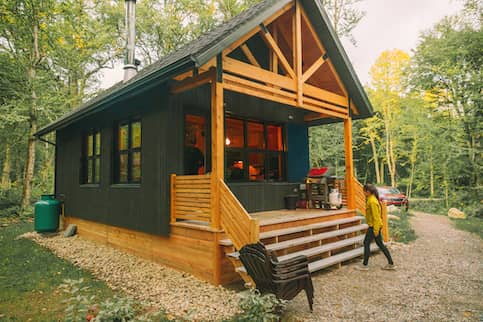How To Use A VA Loan For An Investment Property

Department of Veterans Affairs (VA) loans are an attractive mortgage financing option for qualifying home buyers. If you’re an active-duty military member, a veteran or a surviving spouse, you can enjoy lower mortgage rates, limited closing costs and little to no down payment if you meet certain eligibility requirements for a VA loan.
However, if you’re wondering whether you can use a VA loan to purchase an investment property, VA occupancy requirements may present an obstacle. VA loans are stricter than other types of home loans regarding occupancy requirements.
For example, most VA lenders expect borrowers to use the property as their primary residence for at least 12 months after making the investment purchase. That’s, of course, likely easier said than done if you have a primary residence elsewhere and need to stay there.
Even so, it may still be possible to generate rental income or get a return on your investment when you finance with a VA mortgage.
See rates, requirements and beneifts.
Can You Use A VA Loan For An Investment Property?
While the VA loan program offers more relaxed qualifications for borrowing than conventional loans, VA loan occupancy requirements specify – as already noted – that you must use the home or property you’re purchasing as your primary residence rather than a rental property, vacation home or other investment property.
But while you can’t use a VA loan for rental property with the expressed intention of renting the property out, you do have some options for using your primary residence to generate rental income.
See What You Qualify For
Home Purchase
Home Refinance
Tap Into Equity
How To Use A VA Loan For Your Rental Or Investment Property
Follow the steps below to get your primary residence pulling double duty as a real estate investment property.
1. Make Sure You Meet Eligibility Requirements
The first step you’ll need to take before applying for a VA loan is to make sure you meet at least one of the following VA eligibility requirements:
- Veterans and active-duty service members: You’ll need to have 90 continuous days of service during wartime or 181 days of active service during peacetime.
- National Guard or Reserves: You’ll need to complete 6 years of service before being honorably discharged or placed on the retired list. Or, you’ll need to serve active duty for a total of 90 days with at least 30 days being consecutive.
If you meet any of the above requirements – or you’re a qualifying surviving spouse who didn’t remarry before turning 57 or before December 16, 2003 – you should be eligible to apply and qualify for your Certificate of Eligibility (COE), which will prove you’re eligible for a VA loan.
2. Rent Out A Unit In Your Single-Family Home
While your property must serve as your primary residence, you’re allowed to rent out one or more rooms in your single-family home. So, if you want to finance with a VA home loan and generate some rental income, consider purchasing a home with additional rooms or space.
You can also buy a property with a detached apartment on the lot or a garage that’s been converted into a living space if you prefer more separation from your potential tenants. You may also consider turning that extra space into a vacation rental through Airbnb or Vrbo.
3. Buy A Multiunit Property
The VA allows you to purchase a multifamily property of up to 4 units, such as a duplex, triplex or fourplex – also known as a quadplex.
One unit would need to serve as your primary residence, so you’d be required to live on the premises. But you could generate additional income by renting out any units you’re not occupying
4. Buy A New Home With Your VA Entitlements
Instead of traditional loan limits, the Department of Veterans Affairs uses VA loan entitlements to determine the maximum amount they’ll repay your mortgage lender if you default on your loan.
The VA offers two types of entitlements:
- Full entitlement: Full entitlement means you’ve never used your home loan benefit or that your full entitlement has been restored because you’ve repaid a previous VA home loan in full. The VA no longer places limits on loans over $144,000 for eligible borrowers with full entitlement. The VA also guarantees to repay 25% of any loan amount that your mortgage lender approves you for. So, if you have full entitlement, you’re not limited on how much you can borrow without making a down payment.
- Partial entitlement: Also called reduced entitlement or remaining entitlement, this means you’re currently paying on a VA loan, you’re still living in a home you purchased with a VA loan that you’ve repaid in full, or you’ve previously defaulted on a VA mortgage.
With partial entitlement, you may be able to buy a new primary residence with no money down and convert your existing home to an investment property, but you’ll need enough entitlements left over to cover 25% of your new mortgage loan. Otherwise, your VA lender may require you to make a down payment to cover the difference.
5. Rent Your Home After 12 Months
If you’ve lived in your home for a year – or you’ve been assigned to a new duty station before the 12-month benchmark – you can rent out your VA loan-financed house. Your tenant won’t need to be a service member or veteran who qualifies for a VA loan.
However, keep in mind that you won’t be able to purchase another home with a VA loan until you’ve restored your entitlements from the first loan.
See rates, requirements and beneifts.
6. Refinance With A VA Streamline Or IRRRL
If you’re still an active-duty service member and have a new permanent assignment that’s a non-commutable distance from your primary residence, you may want to purchase a primary residence in your new location.
But what if you’d like to rent out your existing home instead of selling it to free up your VA entitlements? You can take out a VA Streamline Refinance – also called a VA Interest Rate Reduction Refinance Loan (IRRRL).
Converting your VA mortgage loan to a VA IRRRL will exempt you from the VA occupancy rules requiring you to use your property as your primary residence. You’ll be able to purchase a new primary residence with a fresh VA loan while continuing to finance your current home with a VA Streamline Refinance.
To apply and qualify for a VA IRRRL, you’ll need:
- 6 consecutive months of mortgage payments on your current property
- Proof that refinancing will result in an immediate, tangible economic benefit, such as lowering your mortgage rate or switching your home loan from an adjustable-rate mortgage (ARM) to a fixed-rate mortgage
7. Refinance To A Conventional Loan
If you don’t qualify for a VA IRRRL, you can always refinance your existing VA loan to a conventional loan. While VA loans have more flexible financial qualifying standards than conventional mortgages, conventional loans have fewer property restrictions, meaning you can finance a rental property with a conventional mortgage.
Converting to a conventional loan will also restore your full VA entitlements so you can qualify for a new VA loan with no down payment. But be sure to factor in closing costs as you prepare to refinance to a conventional loan.
8. Sell Your Home
While selling won’t allow you to keep your current home as a rental property, it could technically make it an investment property – especially if you’ve built equity in the home.
Home equity is the difference between the fair market value of your home and the amount you’ve paid toward the principal and interest on your home loan. If you sell your home at market value or higher, you’ll collect this equity in the form of revenue. Any revenue left over after you’ve paid off your VA mortgage will be considered a return on your investment.
The Bottom Line
While the occupancy requirements can make it difficult – if not impossible – for qualifying military service members to use a VA loan for the specific purpose of financing an investment property, you can still generate rental income on a home you’ve purchased with a VA-backed mortgage.
Just make sure you understand the VA obligations and be sure to weigh all your options to arrive at the investment decision that best fits your needs and goals.
See rates, requirements and beneifts.











